The following is excerpted from Jesse McClain’s 2014 Master’s thesis—Ed.
Jesse McClain


 Figure 1: Images from top to bottom: Top two images – Anawalt strip mining site in Southern West Virginia. Bottom image: Town of Keystone, West Virginia, near the city of Welch, WV. Photos: Jesse McClain.
Figure 1: Images from top to bottom: Top two images – Anawalt strip mining site in Southern West Virginia. Bottom image: Town of Keystone, West Virginia, near the city of Welch, WV. Photos: Jesse McClain.
SITE CONTEXT AND DOCUMENTATION
Southern West Virginia and Western North Dakota were both visited as part of the research process. These sites were chosen due to their similar connections with the energy industry and also their polar opposites in terms of economic prosperity. Welch, West Virginia is a small town which used to be called “Little New York” in the early 1900s. It was the city at the hub of the world’s first “billion dollar coalfield” and provided many of the area’s residents with a healthy and even prosperous income. Now it is deteriorating as the powerful strip-mining companies replace humans with machines and blow the tops off nearby mountains. Long-time Welch resident, Hilda Mitros, details accounts of personal and environmental violence experienced under the influence of the coal companies. She talks about gas and water explosions in and near her home as the earth becomes unstable with directional drilling and diverted water flow. Floods and sinkholes are commonplace in an area which is sacrificed for it’s fossil fuels. Hilda also reports that the decline in the economic and environmental health of the region has been accompanied by an influx of drugs and political buy-offs. She offers stories of attempts by community members to stand against the development of a major dumping site for disposal of out of state waste. The community was initially able to rally and protest this intervention but eventually, leaders were swayed through high pressure negotiation and shadowy bribery tactics. Hilda used to run a kitchen and bar and she remembers when the times were good and people prospered in a healthy community. I asked her if anything good was occuring in Welch and she said, “no, there is nothing good happening here.” A place that was once full of vitality and optimism is struggling to see a future that holds a promise of anything other than more destruction and abuse.

Figure 2: Gas flares lighting up the night sky in the North Dakota Bakken oil field. Image from NASA/Robert Simon and website, The Telegraph, Fracking Lights up the North Dakota Sky, November 25, 2013
Williston, North Dakota has a history of energy boom and bust cycles. Previous economic windfalls have caused the government to invest heavily in development only to have the jobs disappear. Such situations have left the town holding a giant bill and cautious about future infrastructure investment. Now, increasing sophistication in hydraulic fracturing (fracking) technology has propelled the town back into the boom phase and development is picking up once again. I had the good fortune of being able to to visit the architecture firm of JLG architects and the guys in the office took me on a tour of the new multimillion dollar community recreation center nearing completion. The building was able to be financed, primarily through a 1 cent sales tax hike in town. This illustrates the tremendous growth which is being experienced in the region. From only 2010 to 2012, the population of the city doubled and it now sits at over 30,000. Nick, one of the employees with JLG talks about the magic population number of 50,000. He says that this is the number the city needs to reach to ensure long-term stability and also to convince large scale retailers, such as Target, to move into the area. The fracking industry, which harvests gas and oil from shale rock, is highly controversial because it creates many ripple effects. The first and certainly most tangible is its offer of many high paying jobs, even for entry-level, unskilled workers. Another is its ability to increase the energy independence of the United States. This certainly has far reaching impacts that begin to involve issues of national security and international diplomacy. The other side of the coin revolves around concerns of environmental degradation, aquifer reduction, and health issues from improperly managed resource extraction or waste disposal. The issue is not a clear cut one of fracking being bad or good, it clearly offers a little of both. There is a deeper issue here, however, and that revolves around our growing need for more and more energy itself. See the next section for more details.


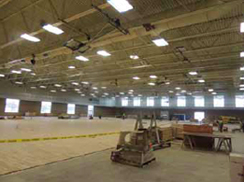
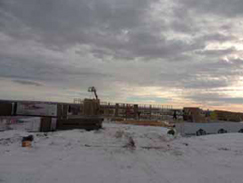
Figure 3: Images clockwise from bottom left to top right: Community recreation center in Williston, North Dakota. Project designed and tour provided by JLG Architects. Bottom right image: residential construction taking place west of town. Photos: Jesse McClain.
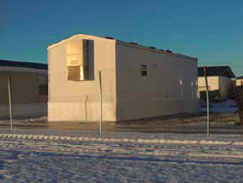
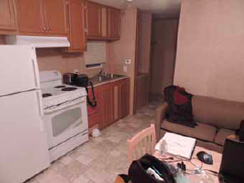
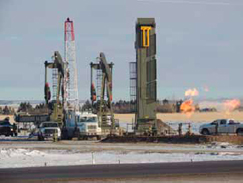
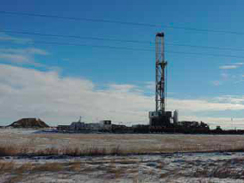
Figure 4: Images clockwise from top left: Images 1 and 2: FEMA trailer in which author slept during visit to Williston, North Dakota. Image 3: Oil pumping station methane flares north of city limits. Image 4: Drilling rig north of city limits. Photos: Jesse McClain.
DEVELOPMENT OF THE PROPOSAL/RESPONSE
This project proposal begins to offer a connection between energy production, social and economic division, and architectural practice. The promotion of unchecked economic growth in our society is driving us down a path with ominous consequences. Tim Jackson, in his book Prosperity without Growth, talks about our consumptive habits and their ultimately unhealthy effects. When we talk about economic growth in our current system, the conversation revolves around the rising and falling levels of GDP or GNP. These values are calculated in strictly monetary terms. A rise in GDP could occur even in the midst of an environmental disaster or the implosion of the social fabric of a community. This can happen because these situations do not possess an immediate numeric price point and therefore are not able to be valued as indicators of the health of a society. GDP is typically what is used to measure or gain a better understanding of the health of a nation and its human make-up. Such a system hides pressing issues for long-term health and well-being. It demands greater and greater efficiency, illustrated in processes such as strip mining and mountain-top removal. Our industrially developed society cries for more and more energy to produce consumer goods and products. We respond with the implementation of sophisticated technology, such as fracking, to extract this demanded energy. In the process, we perpetuate a lifestyle which our finite planet is struggling, and ultitmately, failing to support. Jackson argues that the scale of reduction in our energy consumption is currently no match for the scale of our economic growth. Such an analysis distills the proposal and response into an action which emphasizes the importance of small scale, the value of inefficiency in labor, and the implementation of positive action without permission from larger power forces. It is intended to serve as a reminder that we as individuals must act to realize changes in our society. Stagnation only reinforces the status quo and sometimes we need to be active outside of traditional boundaries and comfort zones.
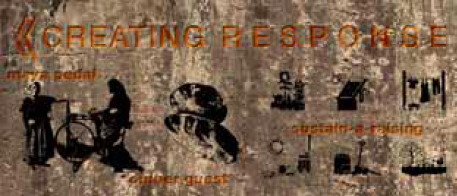
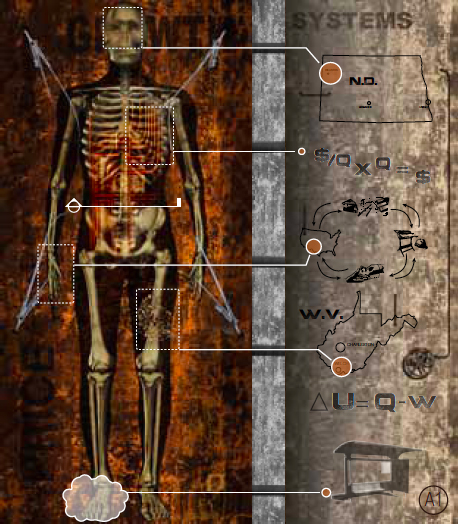
 Figure 5: Exploring responses to the social and economic situations experienced by southern West Virginia and western North Dakota. Artwork created by author, Jesse McClain.
Figure 5: Exploring responses to the social and economic situations experienced by southern West Virginia and western North Dakota. Artwork created by author, Jesse McClain.
MAKING
A bus shelter and a rotating lamp were designed and developed as the architectural response to this research endeavor. The bus shelter was constructed with a few specific goals in mind. One was as a counterbalance to the concept of large-scale influence. It prioritizes space as the domain of one or a few individuals. It was built using private funds and under the labor of primarily one person. The installation was completed by a group of a few friends and community members. Permission was not asked to build or install the shelter and it was simply placed on a vacant lot for public use. The process of constructing this piece emphasizes the power of the individual to influence his/her environment without going through traditional avenues of power. It may not exist on the site for long because of its guerilla deployment, but it created a community galvanizing experience among the installers and it offered an example that a very small group of people can influence a large scale environment. The lamp was designed to illustrate an even smaller and more intimate scale, the value of inefficiency and the personal connections made through active engagement, exploration, and establishment of new relationships. This lamp would not have been possible without the support and generosity of Hilda Mitros from Welch, West Virginia. Hilda spent many hours talking and driving with me through the mountains of her home state. She had never met me before this project but was willing to spend time explaining the history of the region, the former glory of the city, and the problems of the present. She was kind and gracious in all our interactions, inviting me and my wife into her home, cooking and serving us food, and offering suggestions and guidance. Always quick with a laugh or joke, I consider her a friend and this lamp is a tribute to this strong and courageous woman. It is made using discarded materials from her property and offers a prompt to tell the story that Hilda and many others live each day. The rotating action of the rusted wheel turns the lamp and reinforces the value which can be found in inefficient work. It prioritizes the process of engagement over the completion of a task and encourages application of this philosophy in other aspects of our lives.
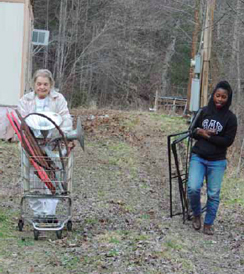
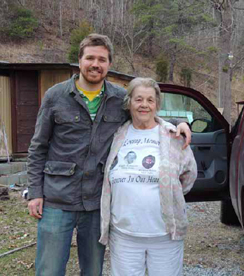 Figure 6: Images left to right: Image 1: Hilda Mitros (L) and Esther Dansby-McClain (R) preparing to load materials from Hilda’s property for transportation to author’s school in Muncie, Indiana. Image 2: Author, Jesse McClain (L) and Hilda Mitros (R) on Hilda’s property.
Figure 6: Images left to right: Image 1: Hilda Mitros (L) and Esther Dansby-McClain (R) preparing to load materials from Hilda’s property for transportation to author’s school in Muncie, Indiana. Image 2: Author, Jesse McClain (L) and Hilda Mitros (R) on Hilda’s property.

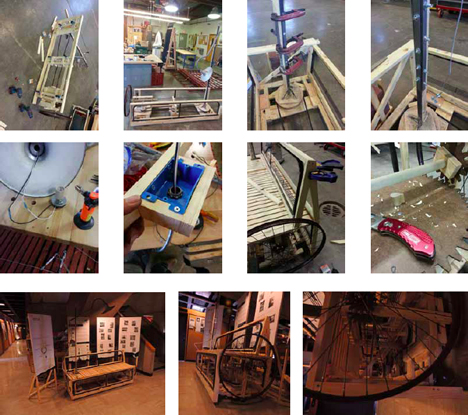
Figure 7: The process of constructing a lamp/bench from discarded materials provided by Welch resident, Hilda Mitros. Process begins in top left, moves across row, down and left to right again.
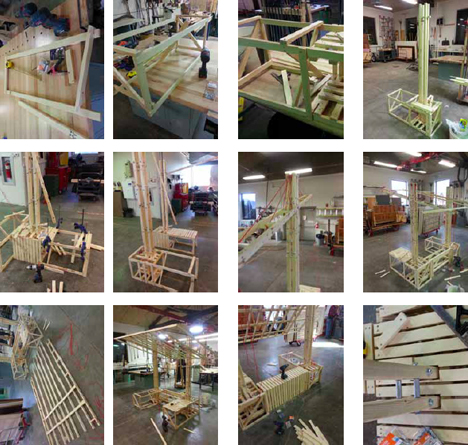
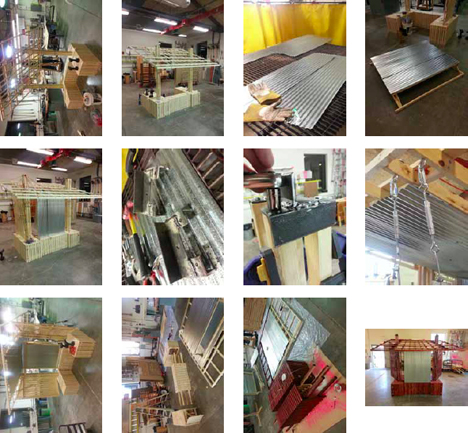
Figure 8: Documentation of bus shelter construction process.
PLACING BUS SHELTER ON SITE IN DOWNTOWN MUNCIE
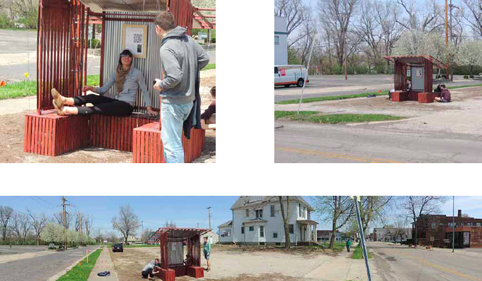
Figure 9: Bus shelter placed at corner of Liberty and Washington Streets. Six people assembled the shelter in a rapid guerilla deployment operation.

Figure 10: QR code link to poll concerning bus shelter public opinion. Email and Facebook identities constructed for shelter contact.
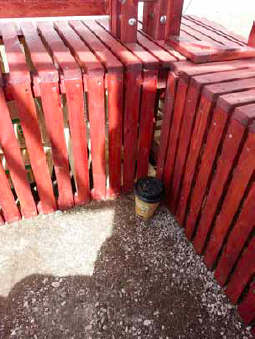
Figure 11: Four days after installation, a coffee cup was found inside the shelter, indicating someone had used it.
CONCLUSIONS
This project began by examining some incredibly large and complex issues. Attempting to weave architectural discourse into these topics of political, economic, and social struggle has been a challenging but invigorating experience. The conclusion of this project has not revealed a “magic bullet” to the problems confronting the architectural profession and society at large. This project was never going to provide a black and white answer or panacea. What it has provided is a simple impetus to be a more active participant in society rather than a passive observer. It has sparked a realization that if change and improvement are to be found, they start with a building of strong local connections with neighbors and community members. I have been very angry at the corruption and injustices perpetrated by big businesses, but a preoccupation with these entities seems to be missing the chance to really do something positive. Part of the problem we are dealing with is an issue of scale and disconnection. The architecture world is familiar with this in the outsourcing of entry level work and the increasing complexities of the construction industry. Furthermore, the more disconnected we are from the energy we use and the products we utilize, the more likely we are to abuse these resources. I think there is potential to realize a better reality if we start to step away from finger pointing and begin building stronger local communities where we are much more connected with the objects and resources we consume. It is possible that with an emphasis on greater connection and locality we can begin to support one another without relying on larger companies and businesses. Another powerful element which has been revealed is the concept of labor/production inefficiency and the value of human experience over profit. To truly protect the health safety and welfare of the public requires architects to question the foundations on which our economy operates. The concepts of increasing production efficiency and required economic growth deserve significant attention. To truly embrace long term prosperity requires an examination of the costs of our lifestyles and how we support living conditions which require us to consume more and more in order to be accepted members of society. Substantial changes will not occur overnight. We have embraced the consumptive lifestyle as the foundation of our economic stability, but its unchecked acceptance perpetuates disastrous consequences. As architects, we have the opportunity to operate at the forefront of a movement that challenges high resource use and the infinite economic growth system. Such action begins addressing what Paul Kivel calls the difference between social change and social service. An embracement of small scale design work and an elevation of labor inefficiency promotes less consumption and elevates physical and mental health over quantitative production and maximum profit. This requires a recognition and treatment of people as complex individuals and not just seekers of larger paychecks. Such a mentality has the potential to usher in a society of widespread prosperity and well-being for all. It is imperative that architects recognize the designer as someone who cannot simply embrace standard construction/business practices as acceptable professional behavior. We have a responsibility to support systemic change whenever possible and not rely on piecemeal pro-bono efforts to satisfy our quest to protect the public’s health safety and welfare.
BIBLIOGRAPHY
•Ahern, Melissa M. and Michael Hendryx. “Mortality in Appalachian Coal Mining Regions: The Value of Statistical Life Lost,” Public Health Reports 124, no. 4 (2009): 541.
•Bell, Bryan. “Expanding Design Toward Greater Relevance.” In Expanding Architecture: Design as Activism, edited Bryan Bell and Katie Wakeford, 15. New York: Metropolis Books, 2008.
•Borden, Gail Peter. “Propositions for a New Suburbanism.” In Expanding Architecture: Design as Activism, edited by Bryan Bell and Katie Wakeford, 229. New York: Metropolis Books, 2008.
•Carus, Felicity. “Asset Management Firm Challenges Big Business with Alternative Portfolio,” Finance Hub from Guardian Sustainable Business (blog), December 12, 2012 (4:27 EST), http://www.theguardian.com/sustainable-business/blog/asset-management-challenging-business-portfolio. “Commodity,” Merriam-Webster. Accessed December 12, 2013. http://www.merriam-webster.com/dictionary/commodity.
•Feldman, Roberta. “Activism Practice: The Risky Business of Democratic Design.” In Good Deeds, Good Design: Community Service through Architecture, edited by Bryan Bell, 111. New York: Princeton Architectural Press, 2004.
•Fisher, Thomas. “Public Interest Architecture: A Needed and Inevitable Change.” In Expanding Architecture: Design as Activism, edited by Bryan Bell and Katie Wakeford, 9. New York: Metropolis Books, 2008.
•Frank, Thomas. “Rocking for the Clampdown: Creativity, Corporations, and the Crazy Curvilinear Cacophony of the Experience Music Project.” In Commodification and Spectacle in Architecture, edited by William S. Saunders, 63. Minneapolis, MN: University of Minnesota Press, 2005. Garbage Warrior. Directed by Oliver Hodge. 2007. Burbank, CA: Morningstar, 2007. DVD.
•Gutman, Robert. “Two Questions for Architecture.” In Good Deeds, Good Design: Community Service through Architecture, edited by Bryan Bell, 17. New York: Princeton Architectural Press, 2004.
•Hedges, Chris and Joe Sacco. Days of Destruction Days of Revolt. New York, NY: Nation Books, 2012. Jackson, Tim. Prosperity Without Growth. London: Earthscan, 2009.
•Kivel, Paul. “Social Service or Social Change?” In The Revolution Will Not Be Funded, edited by INCITE! Women of Color Against Violence, 129. Cambridge, MA: South End Press, 2007.
•Saunders, Willisam S. “Preface.” In Commodification and Spectacle in Architecture, edited by William S. Saunders, vii. Minneapolis, MN: University of Minnesota Press, 2005.
•Stevens, Garry. The Favored Circle, The Social Foundations of Architectural Distinction. Cambridge, Massachusetts: The MIT Press, 1998. Woods, Ashley. “Detroit Bus Company Founder Andy Didorosi’s Experiments Help Detroiters Get Around,” Huffington Post:Good News (blog), September 22, 2013 (1:43 pm), http://www.huffingtonpost.com/2013/08/22/detroit-bus-company_n_3791802.html
Jesse McClain received his master’s degree in architecture from Ball State University in 2014. He currently lives in Tillamook, Oregon with his wife Esther. If you would like to reach him, please send correspondence to: jessemcclain1@gmail.com.











Leave a Reply
You must be logged in to post a comment.